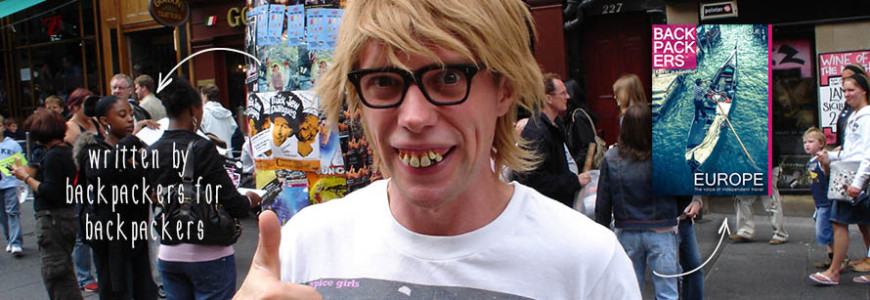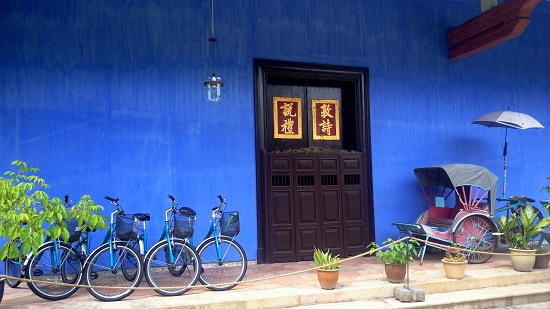
Once upon a time a Malay married a Chinese and thus began the Peranakan lineage. Most people in the world have never heard of the term Peranakan but those who have, they instantly conjure up images of grandeur, elegance and a unique amalgamation of two cultures.
Although there are other variants, the term normally refers to the Chinese immigrants who settled in different parts of South-East Asia and often married local Malays or Indonesians.
Who are the Peranakan people?
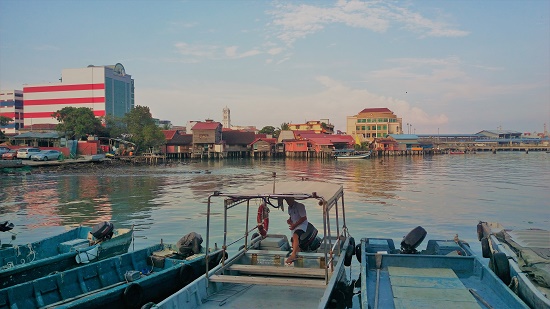
Hundreds of years ago, traders, merchants and sailors from China (and Hong Kong) sailed down the Malay Peninsula and eventually settled in what we call today Singapore, Malaysia (specifically Penang) and Indonesia.
Over time, they married local women and picked up local customs and traditions while holding on to their own roots. This led to the rise of a new culture which is the perfect blend of the Chinese culture and the local south-east Asian culture.
This intriguing blend is reflected on their food habits, costumes, language, traditions, and daily life. Just like many ancient cultures, the Peranakan families also had strict hierarchy in the family. The leader of the family was the family patriarch -the father (Baba), followed by his wife:“Bibik”. While the “Baba” was responsible for earning money and making final decisions, the “Bibik” was in-charge of running the household smoothly. Then came the sons and daughters and everyone else.
[In general, the term for a male Peranakan is “Baba” while its female counterpart is called “Nyonya” or “Bibik” if married]
The Peranakan people of Penang
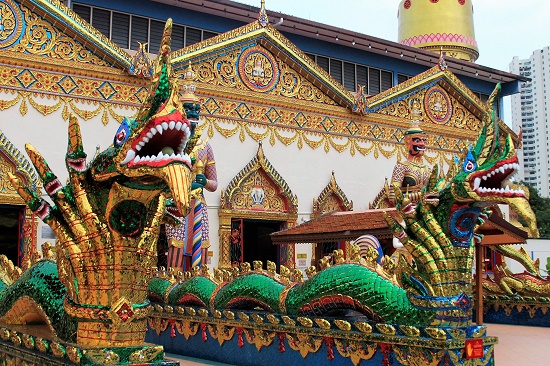
Penang is famous for 3 reasons- food, culture and street art. Much of the cultural heritage is owed to the Peranakan families, who lived in great luxury and grandeur.
If you are in Penang to soak in the heritage and old town charm, then Georgetown is the perfect place to begin. Georgetown has been awarded the status of “UNESCO World Cultural Heritage Site” and it has truly earned this status.
You might end up in a Peranakan restaurant and be savouring Otak-Otak or Garam Assam Fish without even realizing these recipes enjoy a Peranakan history.
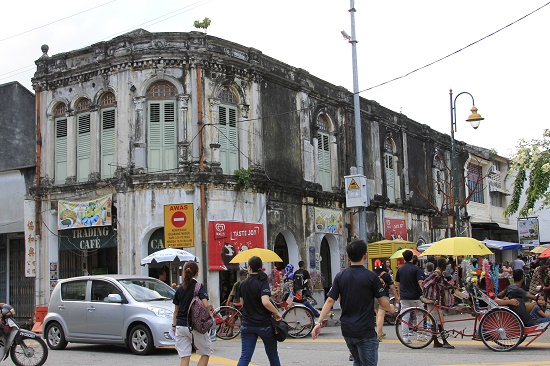
Among many other places, to trace Penang’s Peranakan culture, a trip to the famous Cheong Fatt Tze Mansion and the less popular Penang Peranakan Mansion is a must. Not only will you gasp at the beauty of these mansions, their fascinating stories will surely transport you into another world.
The Cheong Fatt Tze Mansion (Georgetown- Penang)
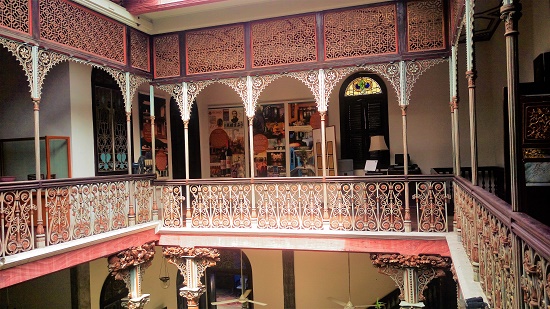
The Blue mansion of Cheong Fatt Tze is the ultimate symbol of Penang’s rich cultural heritage. Cheong Fatt Tze’s story is a classic Rags-to-Riches story. Born into a poor Hakka family and transported to Malaysia from China, Cheong Fatt Tze used his wit and intelligence to quickly start multiple businesses and become an important figure in Penang’s society.
Along with a powerful businessman, he also became a strong political influence. He is often referred to as China’s 1st capitalist and “Rockefeller of the East”.
He lived lavishly in the Blue Mansion with multiple wives and never forgot to contribute to the society to help the under-privileged. Although he took care of all his wives, his seventh wife was his favourite and her portrait stands tall even today in the Blue Mansion.
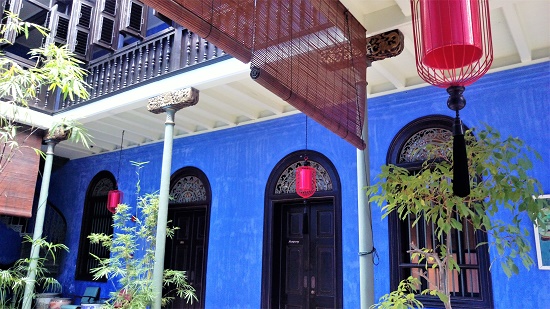
Another very important figure in a Peranakan family is the “Amahs”- the household servant. She often played a very important part in bringing up the children and taking care of the family. These were women who refused to get married and boldly went to a foreign nation to work for rich families. Later in life, they formed sisterhoods and looked after one another.
Other than being an architectural wonder, the Blue mansion played the important role of serving as Cheong Fatt Tze’s office as well as his home. In 1916, after the demise of this Cheong Fatt Tze, this marvellous mansion fell into despair. Luckily, a group of conservationists took notice and spent years to restore it back to its glory.
The splendid mansion is now open to public for guided walking tours and a part of has been converted to a heritage hotel. The giggles and arguments over “Mahjong”, the delicious food and the old blue walls of the mansion are perfect for losing yourself into the Peranakan world.
Pro tip: The Mansion can be viewed only via guided walking tours. Tours are available daily at 11:00am, 2:00pm and 3.30pm, Duration: 45 minutes.
Ticket price: RM17.00 per adult (including GST), RM8.50 per child under 12 years (including GST). Tickets can be purchased on-site.
Address and contact: 14, Leith Street, 10200 Penang, Malaysia, T +604 262 0006,
Email: reservations@cheongfatttzemansion.com
Penang Peranakan Mansion (Musuem)- Georgetown, Penang
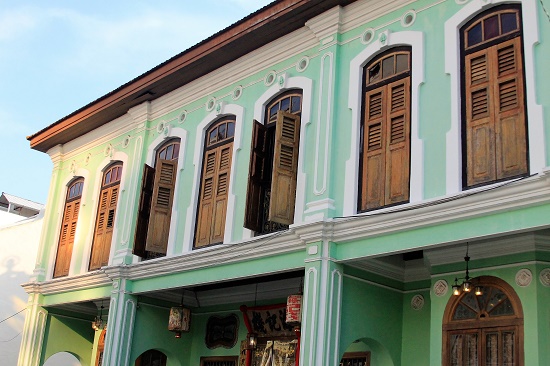
A typical house of a rich Baba was recreated to build the Pinang Peranakan Mansion. Through thousands of pieces of antiques, decorated walls, jewelleries, and costumes, this mansion boldly displays the opulent lifestyle of the rich Peranakan people.
While most travellers miss out on this mansion, in my opinion, this mansion provides insights to the Peranakan world like none other. I myself spent more than 30 minutes to locate this mansion but then again, I was not using Google maps!
As you enter the mansion, your eyes will be dazzled by the gorgeous décor and the stunning display of wealth. The porcelain dinner sets, imported silverware, carved wood panels and designer windows scream elegance and wealth!
If you are lucky enough to catch the guided tours, you will be fascinated with the tales of Peranakan customs ranging from the weird wedding tales to the ideas behind a front hall.
Many of the wedding dresses are in fact on display and believe it or not, they are tiny-literally made for kids! Naturally, I asked the guide about this and he calmly replied: “Oh yes, many of them got married quite young!”. I wondered in my mind about the exact age but moved on to view the ornately decorated bed used for the first night after the wedding.
Everywhere I glanced, my heart marvelled at the stunning exhibition of items all around me and I could almost see myself standing in the middle of this dreamy house when its residents dwelled in it. I could perfectly imagine the beautiful Nyonyas and Bibiks moving around this beautiful house and dining under chandeliers in the European style dinner halls. I could visualise the Babas conducting their business and entertaining guests in one of the numerous rooms and increasing their wealth even more.
Words will never suffice to explain the feeling of standing there, visualizing and tracing back the roots of such a mysterious culture. With a heartful of joy and so many more questions in my mind, I found a Peranakan restaurant nearby and dived off to a chicken curry.
.
Visit a Peranakan restaurant
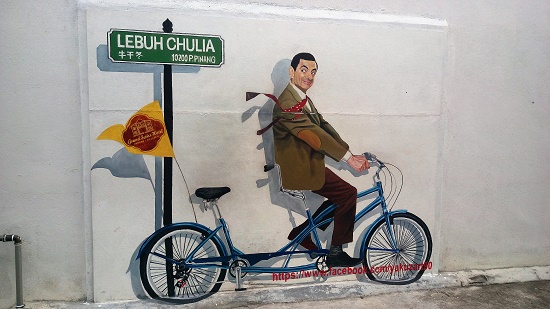
Turn left from the exit of the mansion and then the first right and you will land you in a Peranakan restaurant. It is said that the Peranakan recipes were often kept secret by the Nyonyas and Bibiks and only passed on their next of kin discreetly. As I took the first spoonful of the curry and tasted the rich flavour underneath it, I realized why they had kept such recipes secret.
A cultural immersion is never complete without its food and this culture is most definitely not. Close to the Peranakan mansion lies multiple Peranakan restaurants and a meal in of them is absolutely mandatory.
Get lost in the streets of Penang.
Not just these two mansions, but every street of Georgetown contains so much character. Follow your heart and get lost in the streets of Penang and discover beautiful temples, mosques, churches and murals, and most importantly, the remnants of a glorious culture.
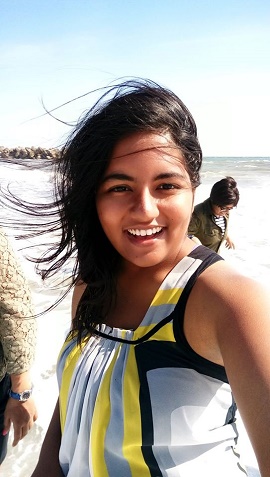
Authors Bio:
Madhurima Dutta
Madhurima is a cultural purist at heart, for whom travelling has been a passion for as long as she can remember. She loves discovering off-the- beaten track places and delving into the unknown. She is never satisfied with visiting the top 10 attractions or just staying in fancy hotels. She believes in doing everything “the local way”. Eating local food, staying with the locals, understanding their culture, traditions and beliefs is her motto while travelling.
FOLLOW Madhurima Dutta @
Website:
www.theothersideforever.com
Instagram:
www.instagram.com/madhurimadutta12
Facebook:
www.facebook.com/theothersideforever








